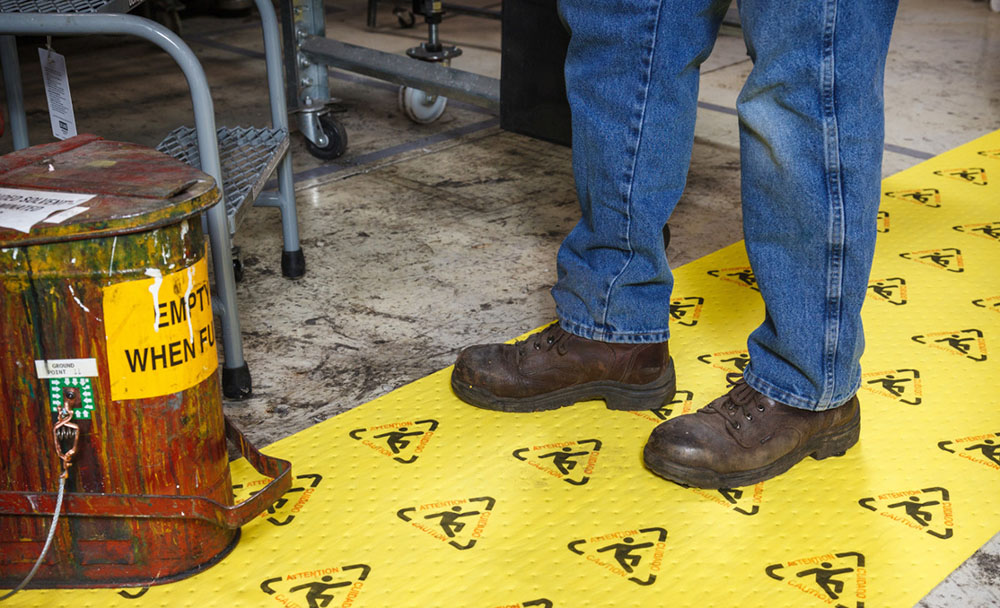Among the most hazardous spots in the American workplace is one all employees encounter every day: the floor.
It’s the site of slips, trips and falls where thousands of injuries severe enough to require time off occurred in the 12 months through September 2022, the most recent period for which statistics were available.
Those falls don’t have to be from a high level to be dangerous: The National Safety Council says 144 workers were killed in falls on the same level in 2022.
The risks are compounded in manufacturing facilities and machine shops, where greasy surfaces or spills and leaks of machining lubricants and cleaning fluids can make walkways treacherous.
Safety supplier Brady SPC offers an arsenal of tools to help keep workers in those environments safe, from all-purpose absorbents designed to soak up a variety of liquids and chemicals to emergency-response spill kits.





